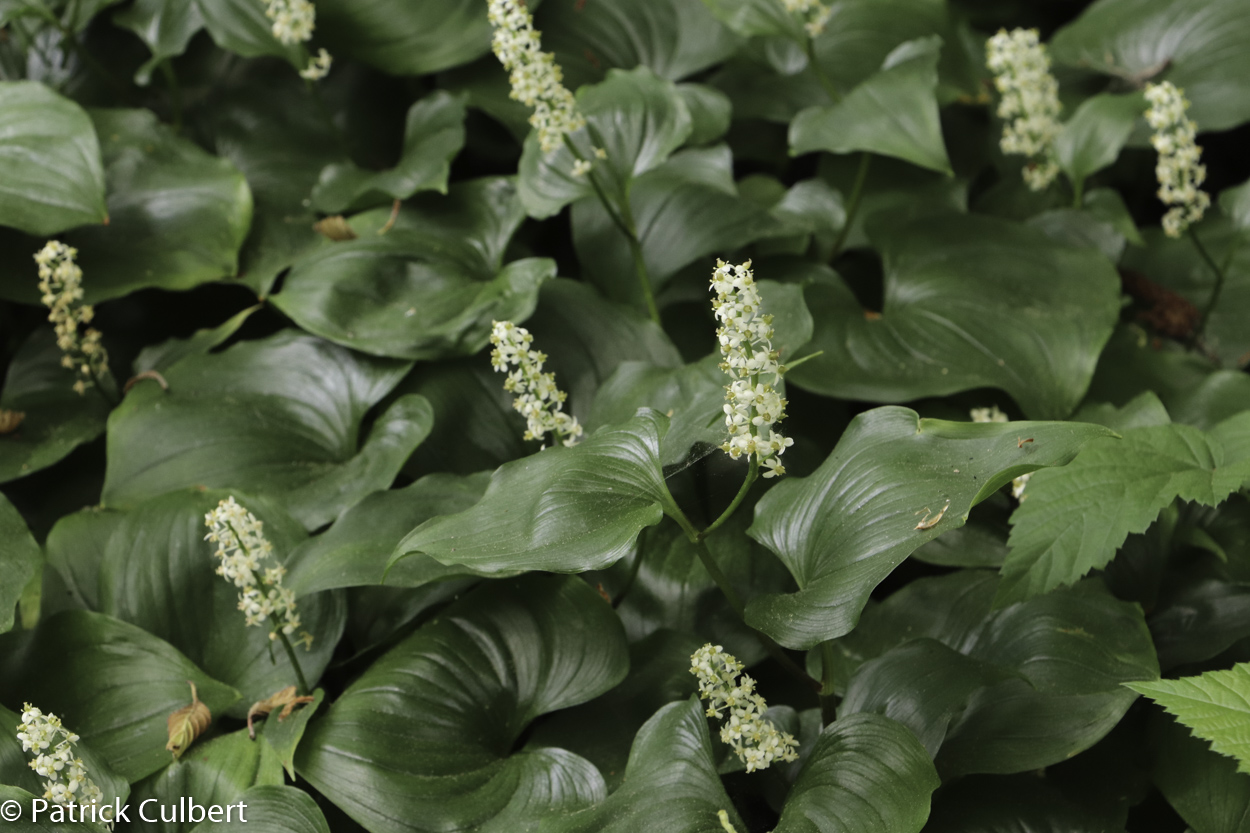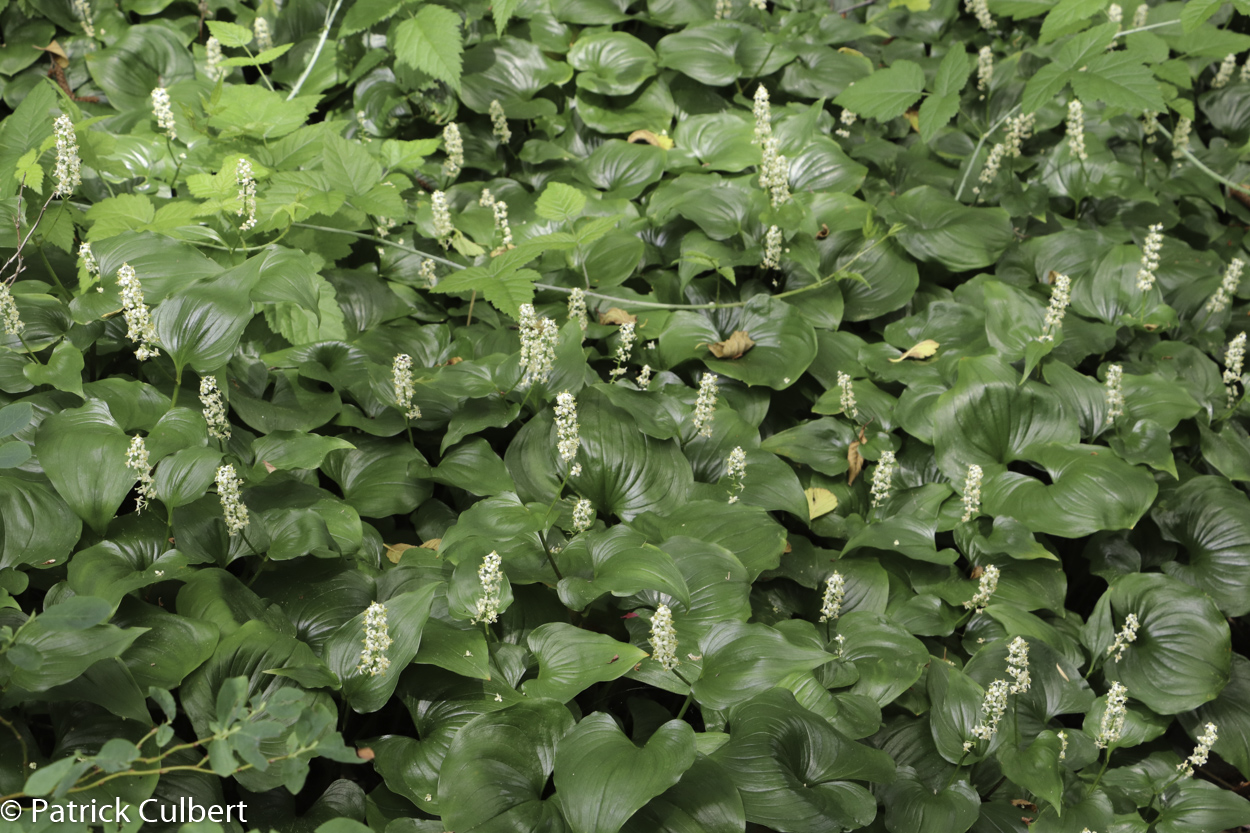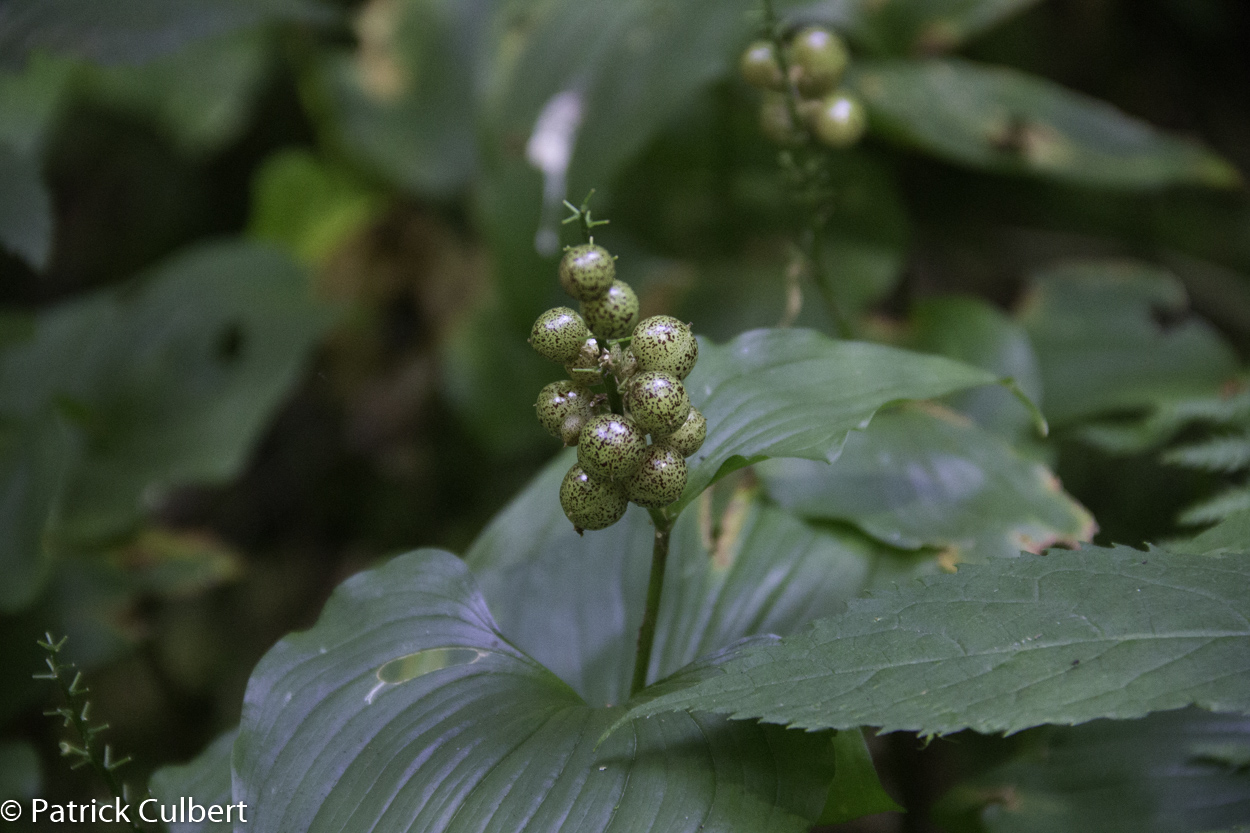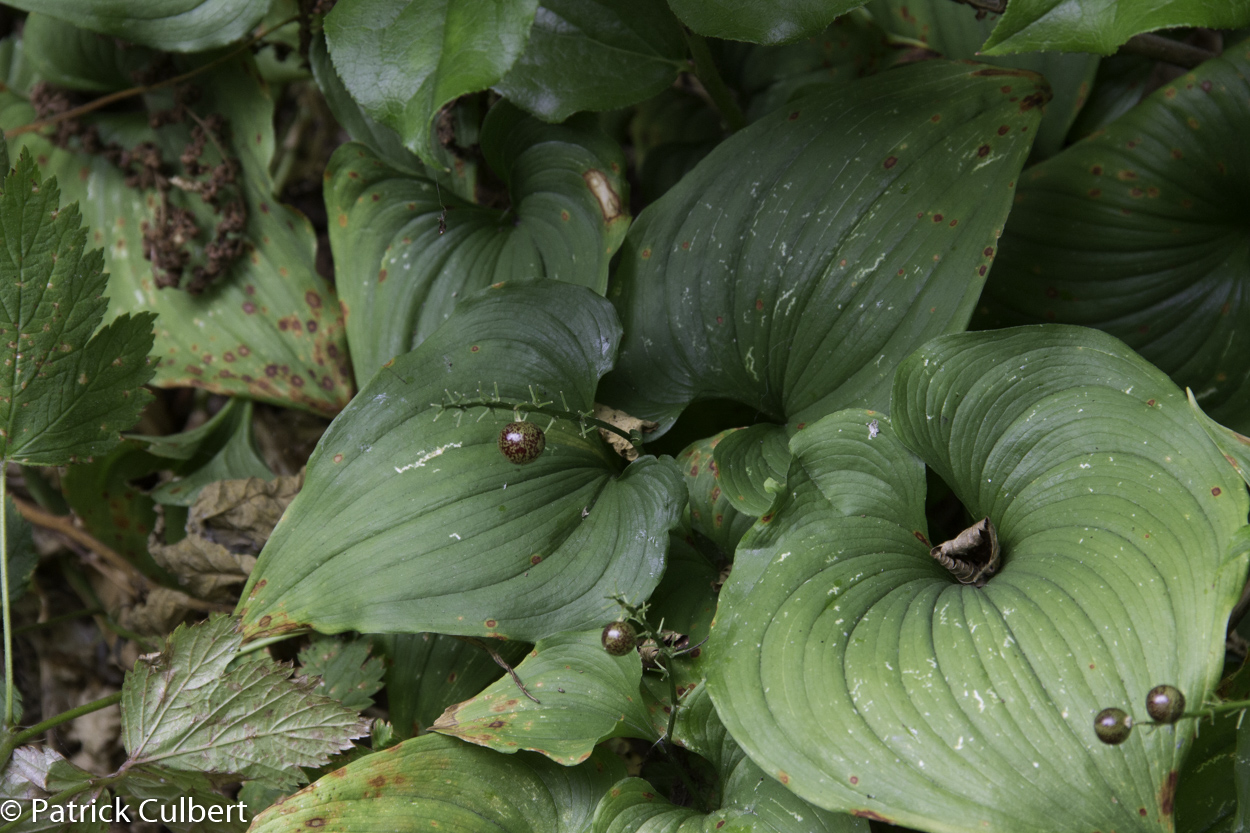Maianthemum dilatatum – false lily-of-the-valley
Common Name
false lily-of-the-valley
Family
Asparagaceae
Scientific Name
Maianthemum dilatatum
Soil Moisture Regime (SMR)
- Wet (W)
- Very Wet (VW)
Soil Nutrient Regime (SNR)
- Rich (R)
Video link
Hitchcock, C. Leo, and Arthur Cronquist. Flora of the Pacific Northwest: An Illustrated Manual © 1973. Reprinted with permission of the University of Washington Press.
General / Habitat
- Herbaceous perennial growing from creeping rhizomes
- Occurs in moist, shady woods and riversides
- Low to middle elevations.
Key Identifying Characteristics
- Form: Erect stems 10-40 cm tall
- Leaves: Alternate with long stalks, typically 2 leaves per plant, prominently heart-shaped, up to 10 cm long, parallel-veined leaves as in all monocots
- Flowers: white, small, many borne in terminal cylindric cluster
- Fruit: round, light green and speckled brown when unripe and red when mature
Lookalikes
- A few other species overlap in this habitat and have heart-shaped leaves (e.g. wild ginger (Asarum caudatum Lindl.), deer cabbage (Fauria crista-galli) , violets...), but the prominent parallel veins make false lily-of-the-valley easy to identify
Interesting Characteristics
- Formerly in Liliaceae family
Co-occurring Species
- Can dominate understory in sitka-spruce forests
External References
Sources
Douglas, G.W. et al (Editors). 1998-2002. Illustrated Flora of British Columbia, Volumes 1 to 8. B.C. Min. Environ., Lands and Parks, and B.C. Min. For., Victoria, B.C.
Pojar, J. and A. MacKinnon. 2014. Plants of Coastal British Columbia Including Washington, Oregon & Alaska. B.C. Ministry of Forestry and Lone Pine Publishing. Vancouver, B.C.








